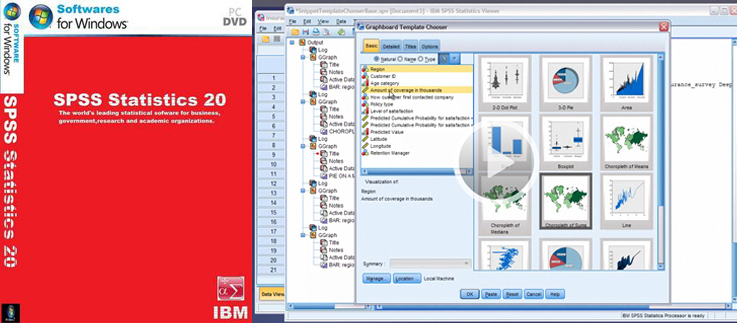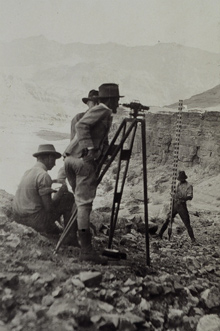- Leveling Program Surveying Training
- Leveling Program Surveying Guide
- Leveling Program Surveying Software
Hello Guys in today's lecture i will show you the easiest way to make a surveying sheet in Excel. Which will have leveling and different elevations already. The Spreadsheets. Thank you for visiting the Land Surveyors Spreadsheets Website. The spreadsheets are free to download and will do the traverse adjusments for you. They provide you with the best, worst and all closures depending on which station you start from. You can choose between Compass and Transit Rule and do closed and open traverse. Program Details. The land surveying & mapping technology program prepares students to enter a high-tech profession that uses state-of-the-art equipment to determine the location and measurement of improvements and other physical features above or below the earth s surface. Surveying is an integral component for land development by civil engineers, municipal planners, and the construction industry.
Survey Points before Design
More screenShots
GradePlaneLandGrading Design Software is for LandLevelers and farmers and provides an easy way to design and outputcut/fill maps for grading land to specified slopes. There are nocomplicated engineering terms to understand and survey data entry is ina convenient spreadsheet
GradePlane Features:
SpecifyRow and Cross slopes, Cut/Fill Ratio
FieldSize: 100 Rows by 100 Columns, variable grid size.
SurveyData Entry in Rod Readings or Elevations
Convenientspreadsheet for data entry and import data files
PlaneMethod of Field Design
AutomaticBest Fit Design based on field Row and Cross slope trends and findslopes that minimize cut yardage.
Takeadvantage of natural field slopes and Design Fields with up to SevenSectors and blend (hinge) slopes at break lines
Importyardage from outside the field or export yardage for constructionprojects.
Forcedesign plane to a specified elevation
3DGraphics view of designs and surveys
MultiplePrinted Maps: Cutsheet, Full Design Information, Survey andGraphs.
Workwith a Full Field Design and Sector Design Simultaneously and compareresults
CheckCut/Fill Ratios as work progresses.
Gradeplane now allows any station to be flagged as apartial station
Survey directly into Gradeplane with MEI orLaser Alignment Control Boxes
Data Points after Design
About the Surveying and Geomatics Program
Are you well-versed in math and science? Are you interested in computers, the latest technology and the environment? If you answered “yes” to these questions, then a TROY bachelor’s degree in surveying and geomatics sciences may be the perfect fit for you.

A global opportunity
As a graduate of TROY’s surveying and geomatics sciences program, you’ll have opportunities to work as a surveyor with some of the most modern and precise satellite navigation systems and measurement devices. You’ll also gain a knowledge and understanding of legal issues ranging from boundary location to land development and environmental regulation.
TROY surveying and geomatics sciences graduates play key roles in the design and construction of the nation’s buildings, roads, bridges, tunnels, water-supply systems and utilities. Depending on your area of expertise, you may find yourself designing and building computer systems for purposes such as land management, resource management, utility organization, traffic control and urban planning. Working as a surveyor, you can also help less developed countries change their land ownership systems to promote economic growth and democracy. In fact, many surveyors also work toward environmental protection and efficient utilization of the earth’s resources.
Program advantages
TROY is home to the only Accreditation Board for Engineering and Technology (ABET) accredited surveying and geomatics sciences program in the state of Alabama. In fact, the program is one of the few in the Southeastern United States. When preparing to enroll, make sure you check out the program’s many foundation scholarships available specifically for surveying and geomatics sciences students.
While pursing your degree with TROY, you will have opportunities to connect with professionals working in the field. This will allow you to gain insight into the careers that resonate with you. During the summers, you’ll also have the option to gain real-world experience by enrolling in the program’s summer co-op courses.


Program focus
Troy University’s surveying and geomatics sciences program is focused on fundamental theories as well as hands-on practices, which will give you exposure to traditional equipment and modern geomatics technologies including both hardware and software.
As part of TROY’s commitment to education excellence, you will be exposed to a diverse range of surveying equipment including robotic total stations, laser-equipped total stations and GPS equipment. You will also be trained in TROY’s geomatics computer lab, which is equipped with the latest computer-aided design (CAD), photogrammetry, land surveying software, GIS software, drone and scanning software.
With a surveying and geomatics sciences program degree from TROY, you can also specialize in the following areas:
- Construction surveying
- Geodesy and GPS
- Geographic information systems
- Hydrology
- Land development
- Land law and boundary retracement
- Land surveying
- Photogrammetry and remote sensing
- Scanning and drone technology
- Survey fundamentals
A look at the numbers
According to the Bureau of Labor Statistics (BLS), the job growth for surveyors is projected to increase by 6 percent from 2018 to 2028 while the potential job growth for photogrammetrists and cartographers is expected to increase by 15 percent within that same timeframe. The BLS also reports a rising demand for geographic data and accurate digital maps for businesses and consumers. This demand can lead to opportunities for professionals who are proficient in GIS and other geospatial technologies.
Geospatial Informatics Department Page
Program Objectives
- Graduates will be prepared to obtain quality entry-level positions within the Surveying and Geomatics profession.
- Employers will be pleased with the quality and performance of graduates.
- Graduates are well prepared for the licensure process of examinations and experience.
- Graduates will hold wide-ranging positions within the diverse disciplines of the Surveying and Geomatics fields.
- Graduates have grown and advanced into managerial/ownership/leadership positions within the Surveying and Geomatics fields.

Geomatics students begin with the fundamentals of measurement science offered in GEM 2220 Basics of Surveying and continue with GEM 3330 Advanced Measurement Analysis. Students learn how to make survey measurements and how to compute products desired by clients from these measurements. Class time is spent developing the concepts of what it means to be precise and what it means to be accurate as these concepts relate to measurement theory. Students learn how the physical properties of the earth affect field measurements and the corrections for these effects. Students gain experience with modern instrumentation used for making field measurements, common sources of error in their usage, and the organized crew procedure and note keeping necessary for professional results.
The sub discipline of land surveying is an ancient science dating back to the first need to delineate land ownership on the ground. The need for land boundary or cadastral surveyors is just as important today. In fact, one could argue that as human population grows the demand for the fixed quantity of land on the earth surface increases. As land values increase the need for the accurate determination of land boundaries becomes even more important.
Many geomatics professionals assist in the design and construction of roads, bridges, subdivisions, and planned unit developments. Areas of interest are planning and zoning, the principles of route surveying, hydrology, large-scale mapping, subdivisions design, and CAD drafting. Students are offered the opportunity to study land development in GEM 4405 Route and Construction Surveying, GEM L407 Land Development Lab, and GEM 4409 Hydrology. Topographic Mapping is studied in GEM 3330 Advanced Measurement Analysis and GEM L405 Route and Construction Surveying Lab. GEM 4409 is a design course focused on the determination of peak flows and design of hydraulic flows to accommodate runoff. An exciting integration of land development and GIS are offered by new software that offers parcel management features. Career opportunities exist for Geomatics Professionals in construction surveying, subdivision design and layout, and Land Information Systems (GIS).
Least Squares is a statistical criterion for the estimation of the goodness of fit in correlation analysis. Least squares methods aim to minimize the sum of squared differences between the observations and the predictions from a model. Least Squares is a method for determining the line that comes nearest to passing through a set of data points. The squares come in because of Pythagoras' theorem about triangles. The method aims to minimize (hence the word 'least') the sum of the differences from the data points to the line in question. Least squares is a mathematical optimization technique that attempts to find a 'best fit' to a set of data by attempting to minimize the sum of the squares of the differences (called residuals) between the fitted function and the data.
Geodesy is the study of the size, shape, and the effect of the physical properties of the earth on measurements. A mathematical model of the earth is the subject of geometric geodesy, the earth's gravity field is the subject of physical geodesy, and the use of earth satellites to measure the earth's surface the concern of satellite geodesy. The civilian use of the Global Positioning System (GPS) is a major component of the study of geodesy. GPS plays a valuable role in providing precise measurements between receivers on the earth's surface based on one-way signals broadcast from a network of satellites. Study of the models used by GPS systems to determine precise coordinate locations and the transformation of these initial coordinates to facilitate the accomplishment of local geomatics projects is a major portion of the course work in GEM 3370 Geodesy and Geodetics.
GPS is complex system that is easy to use. However, to understand the system itself, one needs to study the propagation of electromagnetic waves (microwaves), the properties of the atmosphere, the orbits of the satellites and the impact of solar radiation, the concept of precise timing, the ellipsoid model used as a reference system for GPS measurements, transformations between coordinate systems, and the principles of least squares adjustment.
The U.S. National Map Program providing full map coverage of the continental United States was made possible by the development of the theory and practice of photogrammetry. Photogrammetry is the science of obtaining measurements from photographs. Today the importance of photogrammetry has not diminished as the most effective method of providing precise spatial data over large project sites. The pressing need for precise spatial data for Geographic Information Systems makes the field of photogrammetry an exciting area to study. Students are taught the fundamentals of photogrammetry with an emphasis on being able to apply photogrammetry in a practical way to all types of surveying and mapping problems. Troy University has made an investment in leading-edge imaging software to allow students to use computers to view photography, perform image enhancement, set-up stereo-models, and to produce orthophotos to use as maps. Our students are taught how to perform aerial flight planning to ensure the photography and control necessary to meet specific project data accuracy requirements. Students are exposed to the following technology:
SUMMIT EVOLUTION digital photogrammetric workstation: This is a user-friendly system for performing 3D feature collection directly into AutoCAD®, MicroStation®, or ArcGIS®. The SUMMIT EVOLUTION system allows for easy management of multiple model images along with their appropriate camera and control files in a project-based environment.
ERDAS IMAGINE is one of the world's leading provider of geographic imaging solutions. The software facilitates visualizing, manipulating, analyzing, measuring, and integrating any type of geographic imagery and geospatial information into 2D and 3D environments. ERDAS IMAGINE is easily integrated with ArcGIS®

Simply put, a GIS combines layers of information about a place to give you a better understanding of that place. One of the main benefits of GIS is improved management of your organization and resources. A GIS can link data sets together by common locational data, such as addresses, which helps departments and agencies share their data. By creating a shared database, one department can benefit from the work of another.
Leveling Program Surveying Training
Courses
This program of study can be adjusted to meet your specific needs and interests in the field of geomatics. The core courses in the major provide a study of the several sub disciplines in Geomatics: land surveying, land development, photogrammetry, remote sensing, geodesy, and geographic information systems (GIS).The eighteen semester hour minor provides the opportunity to prepare for a specific job opportunity after graduation, business ownership, or graduate school. Excellent student advising is available to you to help you make these choices.
Interested in Applying to TROY?
Program Locations
Leveling Program Surveying Guide
- Troy Campus